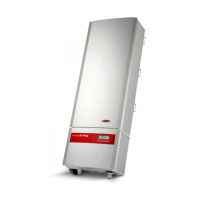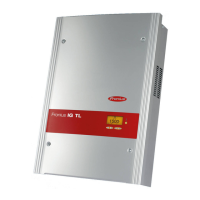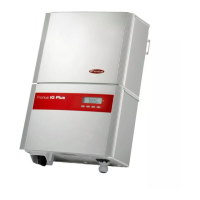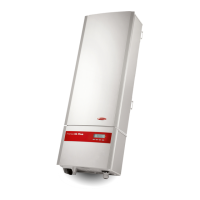45
The housing and power modules are equipped with temperature-controlled, speed-
regulated fans. This has a number of benefits:
- Heat sinks can be smaller - compact housing
- Cooler components - improved efficiency and longer service life
- Speed regulation of the fan and the design with ball bearings means that energy
consumption and noise pollution are kept to an absolute minimum
- In the event that the heat cannot be dissipated even when fans are working at
maximum speed (e.g. in switch cabinets that do not have an appropriate heat
dissipation system), a process known as power derating is initiated in order to
protect the FRONIUS IG.
- A power derating system briefly restricts the output from the FRONIUS IG in
order to prevent the temperature from exceeding the permissible value.
- Your FRONIUS IG will continue to operate without any down times for as long
as possible.
- Even if the FRONIUS IG very frequently operates under maximum load, the
fans can be expected to have a service life of around 20 years.
Forced-air venti-
lation
3
outdoor
*
2
3
1
**
IP 43 version:
Fitting the hood
and exhaust pipe
(continued)
Figures 2 and 3 show an exhaust air guide with a bent pipe. We recommend this version
where the air exits in the following situations:
- On the west side of the building
- In locations that are exposed to adverse weather conditions
- In other areas that are subject to water spray
Important! The maximum pipe length must not exceed 5 m. The diameter of the torch
neck supplied (folded spiral seam version) is 224 mm.
*)
In all other air outlet situations, an
exhaust air guide with a straight,
bevelled pipe is sufficient.
**)
A non-return valve must be used in
order to prevent the ingress of cool
outside air. The fall of the pipe to-
wards the outside of the building must
be at least 2°.
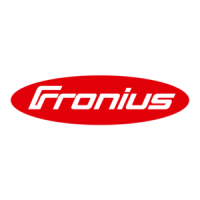
